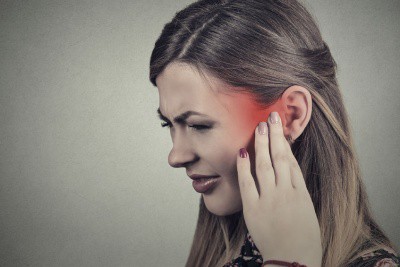Blocked Ear and Sound Therapy
 Pressure in the Ear Explained
Pressure in the Ear Explained
The Eustachian tube links the back of the throat and the ear, allowing air in the middle ear to be equalized with the outside air pressure. Dysfunction of the Eustachian tube causes many common symptoms like blocked ear or pressure in the head, clicking, popping or painful ears. In children under seven, the Eustachian tube is almost horizontal, and this explains why children are so prone to ear infections. In adults the tube tilts to 45° making it easier for fluid to drain out of the ear. However various types of injury or poor muscular function can lead to chronic Eustachian tube problems.
Nerve supply
The function of the Eustachian tube plays an important role in aspects of our hearing and speech. When the Eustachian tube does not function normally it causes discomfort in a number of areas. It is supplied by multiple nerves, which may explain the potential for referred pain to other regions of the head and neck. One of the supplying nerves is also involved in communications with the eardrum, the pressure system of the inner ear and the tongue.
Muscles of the Eustachian Tube
There are four muscles involved in the function of the Eustachian tube. These include the tensor veli palatini, levator veli palatini, salpingopharyngeus, and the tensor tympani. These muscles serve to support the tube, lift the soft palate, open the tube and balance the pressure on the eardrum.
Normal Function
The normal Eustachian tube is closed when it is at rest, with slight negative pressure (a gentle vacuum) present in the middle ear. It opens during swallowing, sneezing, and yawning.
The Eustachian tube has three functions: ventilation, drainage, and protection. When the tube is open it allows ventilation of the middle ear and equalization of pressure in the middle ear with atmospheric pressure. It also allows the middle ear to clear unwanted secretions. By staying closed as a general rule, it protects the middle ear from phlegm and other nose and throat secretions, as well as from sound.
Eustachian Tube Dysfunction
The Eustachian tube may become blocked with mucous and phlegm due to allergy or infection. It could also be blocked by a growth or tumor, and this will be checked by your doctor or ENT specialist. However chronic problems of malfunction of the Eustachian tube muscles, leading to a frequent sense of blocked ear or pressure in the head may not be familiar to most practitioners. Such conditions are difficult to diagnose and often result in long-term annoying disorders, which cannot be successfully treated with medical solutions.
Treatment
Specialists agree that Eustachian tube disorders represent some of the most challenging management problems faced by otolaryngologists. Many of these conditions could, however, be easily remedied with a course of Sound Therapy. Sound Therapy is also the only treatment able to directly address chronic Eustachian tube problems. Good muscle tone and flexibility is essential for the finetuning of the middle ear mechanism. The alternating high and low frequencies in the music cause the ear muscles to repeatedly tense and relax. This exercise may restore muscle tone and improve the functioning of the whole ear mechanism. Any Eustachian tube problem which is related to muscle function is likely to respond well to this treatment.

